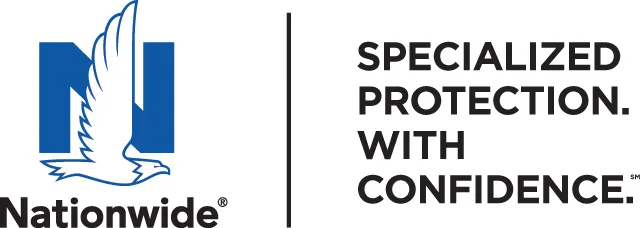Consumers taking financial risks despite growing weather threats
During the 1980s, catastrophic weather events that caused billions of dollars in damage – adjusted for inflation – occurred a little more than three times a year on average, according to the National Centers for Environmental Information. More recently, they happen at a pace of about twice a month.
NOAA reports there have been 115 billion-dollar events over the last five years (an average of 23 events per year), resulting in $746.7 billion in total damage costs. As recently as the decade from 2010-2019, there were 13 such events per year. The increased frequency and severity of these events is a critical issue for insureds, agents and carriers alike.
Increasing concern about weather and costs
According to a recent Nationwide survey of commercial property owners and independent agents, there is a high degree of concern about extreme weather.
More than two thirds (67%) of commercial property stakeholders – and 74% of agents – are highly concerned about damages from severe weather and natural disasters, a 5-point increase from 2023, but this rises to 93% (28 point increase) and 86% (16 point increase) in wildfire- and hurricane-prone states, respectively.
The rising threat of extreme weather and significant concern from property stakeholders highlights the need for businesses to protect their workers, property and operations. However, as the country has contended with uncertain economic conditions and rising costs, business owners are paring expenses –including insurance – and there is an increasing reluctance to take on additional costs.
Despite the rising threat, more property stakeholders are willing to take financial risks:
- 76% are looking into options or interested in ways to cut costs.
- 54% are opting out of optional coverages
- 42% said they would consider reducing their property coverage to help reduce expenses.
- 27% knowingly carry inadequate coverage (8 points higher than respondents a year ago).
Agents say at least 40% of their commercial customers are underinsured for severe weather impacts.
Fewer willing to fortify
While 78% of property stakeholders have added bracing for wind, there has been a 13-point drop in those who would build or repair their buildings above current code requirements. Correspondingly, our survey also found that fewer property stakeholders are willing to pay more to make their buildings more weather resilient.
- Only 31% report willingness to invest in measures to improve their properties’ resilience to weather events, a 23-point drop from 2023.
- Those who are willing to improve their properties are open to paying up to $10,000 to do so, which is down 50% from 2023.
Even in areas that are prone to hurricanes and wildfires, fewer respondents are willing to spend more to increase building resilience:
- In hurricane-risk areas, 42% of respondents said they would pay more to upgrade buildings – down 24 points from the previous survey.
- In wildfire-risk areas, 42% also said they would be willing to invest in resiliency, which is 15 points lower than the previous survey.
This drop comes despite research that shows fortified structures and stronger building codes can help businesses survive severe weather. The Insurance Institute for Business and Home Safety conducts tests at its Research Center to help identify ways to improve building standards and ultimately lead to stronger buildings.3
- Time to research options (64%)
- Construction costs (62%)
- Access to trusted advice (60%)
While slightly fewer respondents in hurricane- and wildfire-prone areas listed obstacles to upgrading buildings, majorities did list these factors in a similar order.
- Hurricane states:
- Access to trusted advice (63%)
- Construction costs (59%)
- Time to research options (57%)
- Wildfire states
- Time to research options (60%)
- Construction costs (59%)
- Access to trusted advice (57%)
Action to take
The survey results show that there is clear concern about the threat of severe weather, and opportunity to have conversations about how to mitigate that risk.
Nationwide has resources that help businesses address the risks they face, and an important first step is to develop a business continuity plan. Implementing a business continuity plan is a critical step for organizations to help identify exposures and take action to protect their operations.
Even if a business states that they have a continuity plan, it should be reviewed as organizations and their needs evolve. Reviewing the continuity plan and performing tabletop exercises can help note strengths and weaknesses. Vulnerability and risk assessments can also uncover additional needs, especially if the business conducts operations or has facilities in other regions of the country that may have different risks.
Here are some resources that can help businesses understand the weather threat and implement protection strategies:
Materials on the Risk Management Solutions Center can be shared with customers to help educate them about severe weather events, prepare for emergencies, and establish business continuity plans.

